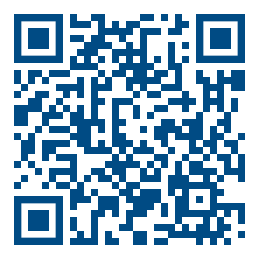Course details
Modules (1)
Course Duration:
2 hours
You can start, leave and pick up where you left off at your own pace!
Course Credits:
2 CME creditsAssessment & Awards:

About this course
Regardless of the cause, the course of liver disease progression can be tracked by monitoring the presence and amount of liver fibrosis. To obtain this information, liver biopsy is still the gold standard. Although it is a key tool in hepatology, it has drawbacks [1]. It is invasive, must be performed by an experienced pathologist and is not without risk.
In addition to the invasiveness of the procedure, liver biopsy only provides information about the fibrotic state for one point in time. However, fibrosis is a dynamic process that can evolve [2]. So, the use of repeatable, more accessible and non-invasive techniques (NITs), in combination with liver biopsy, to assess to progression of all aspects of liver disease over time is important.
Due to the growing number of reports on the accuracy of existing and novel non-invasive techniques, in 2021, the European Association for the Study of Liver Disease (EASL), updated the previous clinical practice guidelines (CPGs) for the evaluation of liver disease and severity ([1]). These new guidelines are to provide the best available evidence on the use of NITs to assess chronic liver disease.
[1] European Association for Study of Liver; Asociacion Latinoamericana para el Estudio del Higado. EASL-ALEH Clinical Practice Guidelines: Non-invasive tests for evaluation of liver disease severity and prognosis. Journal of Hepatology 2015;63:237–64. https://doi.org/10.1016/j.jhep.2015.04.006.
[2] Hytiroglou P, Theise ND. Regression of human cirrhosis: an update, 18 years after the pioneering article by Wanless et al. Virchows Archiv : An International Journal of Pathology 2018;473:15–22. https://doi.org/10.1007/s00428-018-2340-2.
Benefits for learners
- Presentation and discussion of EASL clinical practice guidelines
- Continued professional development and learning
- CME from the European Union of Medical Specialists (UEMS)
Overview
- Learn about the current and new non-invasive tests
- Understand how to assess liver disease prognosis and severity in patients with chronic hepatitis and emerging diseases
- Learn how to designate patients with chronic liver disease at risk of developing clinically significant portal hypertension
- Hepatologists
- Gastroenterologists
- Health Care Professionals
Release date: October 2021
- Complete the Pre Knowledge Check to determine your current level of understanding. This is not counted as part of your grade for this course.
- After completing the Pre Knowledge Check you can view the main content.
- After completing the main content you will unlock the Post Knowledge Check. You must pass this to complete the course.
- Once you pass all the Post Knowledge Checks you will need to provide course feedback in order to unlock your Course Certificate and CME certificate.
The course is available through desktop and mobile devices on all internet browsers (e.g. Safari, Microsoft Edge, Chrome and Firefox). You can also take this course using the Moodle app, please follow the below instructions if you are running the app for the first time. If you have already access the EASL Campus via the Moodle app, just go to step 5:
- Download the free Moodle app from your favourite application store.
- Launch the app and under "Your site" enter: easlcampus.eu/courses.
- Choose "Log in using your account on: EASL".
- Enter the credentials of your MyEASL account. If you do not have an account yet, please create one for free here.
- Click on the three dots icon at the bottom right corner of your screen and select "Scan QR Code".
- Scan the below QR code to access this course:

- Start the course.
Completing this course will grant you with an EASL "Certificate of Completion" and two European CME credits as well as experience points to collect the topic-related and bookworm badges.
